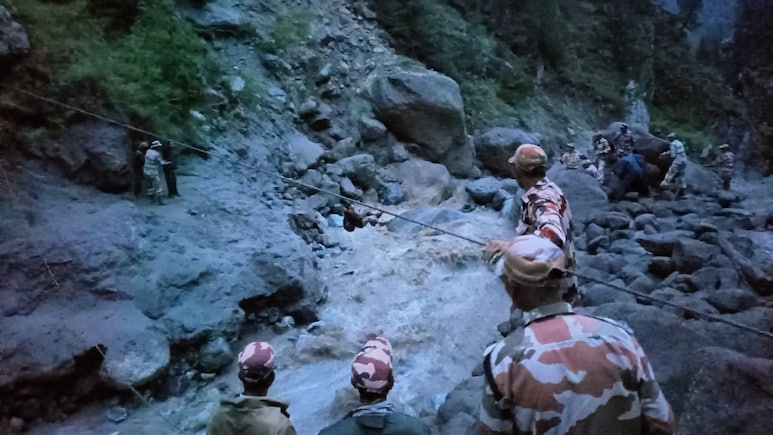
At least four people are dead and over 50 remain missing after a cloudburst caused massive flash floods and a mudslide in Uttarakhand's Uttarkashi on Tuesday. The disaster struck Dharali village, sweeping away homes, restaurants, and lodges.
Footage showed structures collapsing and being swept downstream as terrified residents screamed for help. The torrent split into two streams, one heading towards Dharali, the other towards Sukki.
A red alert remains in place in Uttarkashi.
While Uttarakhand has seen its share of monsoon-related destruction over the years, the latest tragedy reminds us of the Kedarnath deluge of 2013 and the Rishiganga flash flood of 2021.
Past Himalayan Disasters
Kedarnath Disaster (June 2013)
Between June 15-17, 2013, unprecedented rains and a glacial lake outburst at Chorabari Lake (Gandhi Sarovar) triggered one of the most destructive disasters in history. The sudden surge released more than 260 million litres of water, mud, and debris into the Mandakini valley.
An estimated 5,700 to 6,000 people died, while over 1.1 lakh were rescued in one of the country's largest coordinated relief operations. Several towns, roads, and bridges were swept away. Thousands of pilgrims visiting the Kedarnath Temple were caught in the chaos. The temple itself remained intact, protected by a large boulder that diverted the force of the floodwaters.
Years of unregulated construction, widespread deforestation, and the absence of effective early warning systems amplified the destruction.
Rishiganga Disaster (February 2021)
On February 7, 2021, a massive avalanche, triggered by a break-off from a glacier near Nanda Devi, led to a sudden rise in the Rishiganga and Dhauliganga rivers.
The floodwaters tore through the narrow mountain valleys, obliterating everything in their path, including two major hydropower projects - Rishiganga (13.2 MW) and Tapovan Vishnugad. The disaster killed nearly 200 people, most of whom were workers at the sites.
Initially believed to be caused by a cloudburst, the disaster was later confirmed by scientists to be the result of a rock and ice avalanche.
The 2021 flood showed the risks of building hydropower projects in regions already vulnerable to glacial shifts, landslides, and climate-induced phenomena. It also brought attention to the need for glacier monitoring and disaster-resilient planning.
Track Latest News Live on NDTV.com and get news updates from India and around the world

